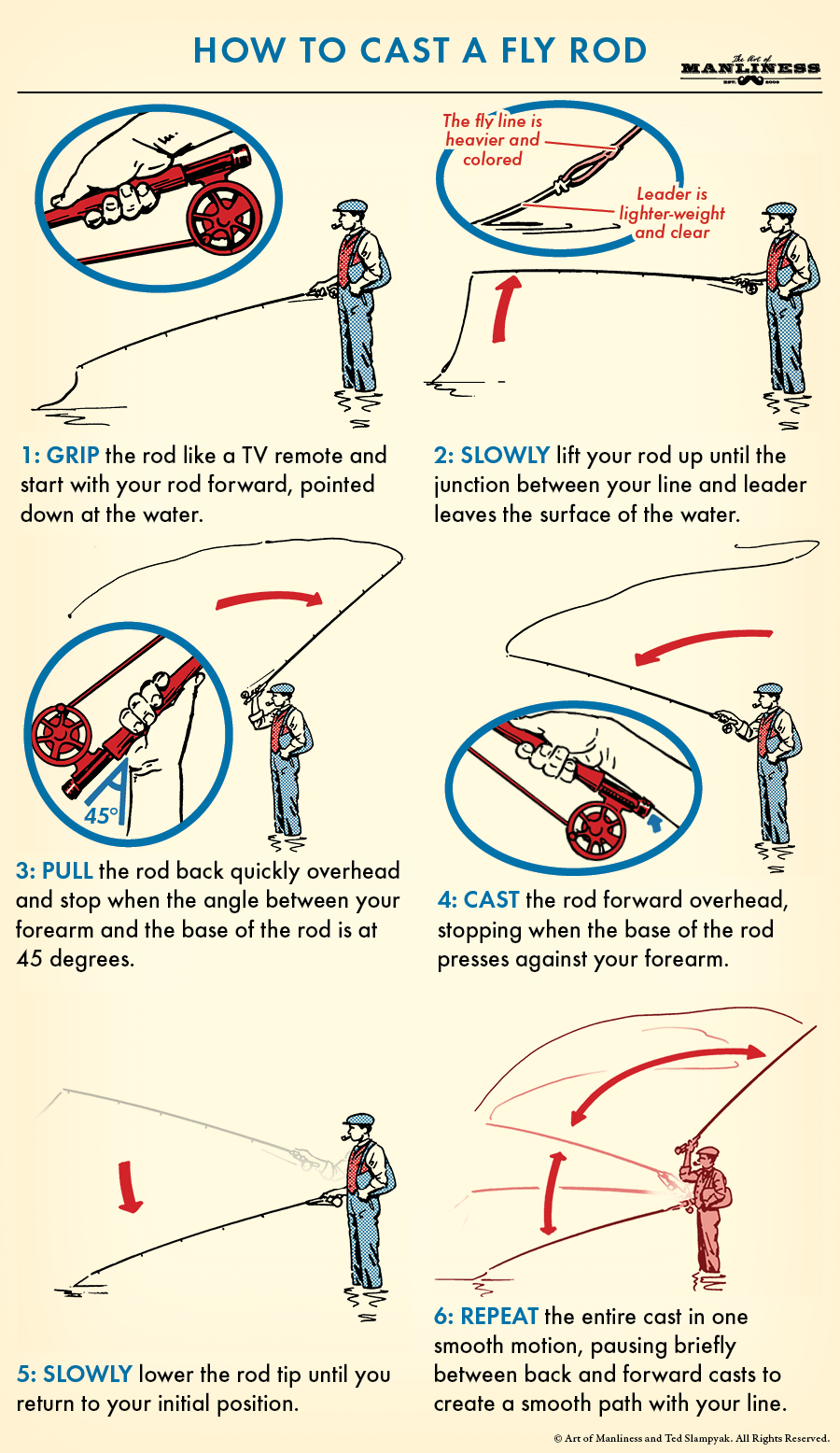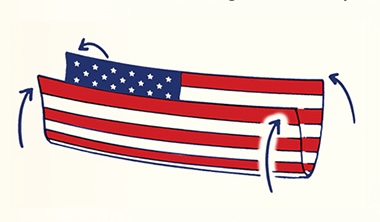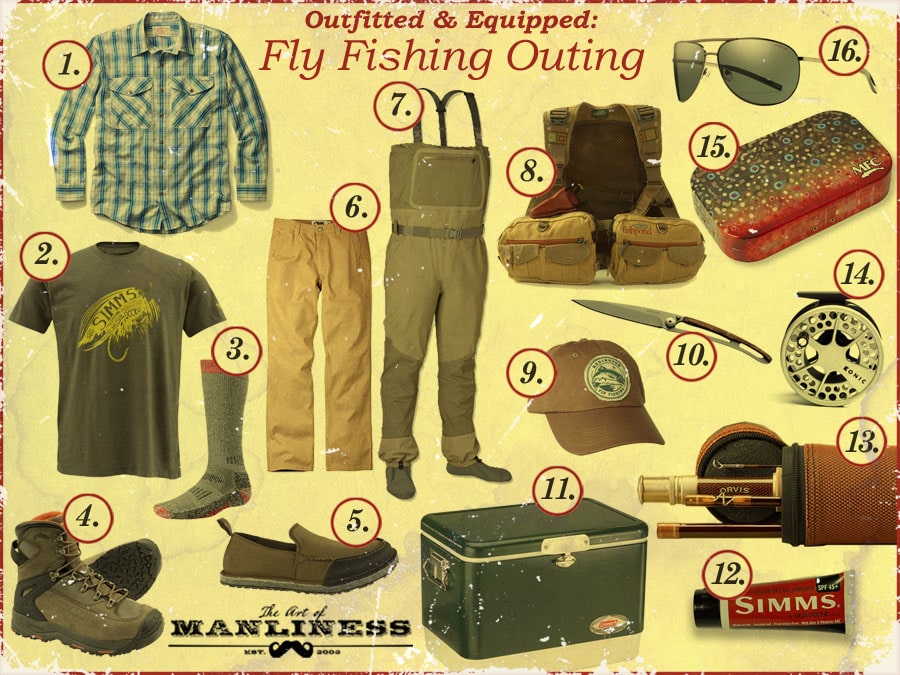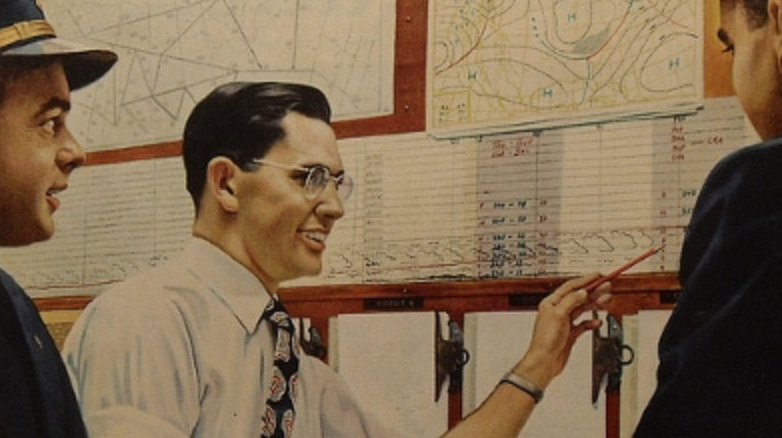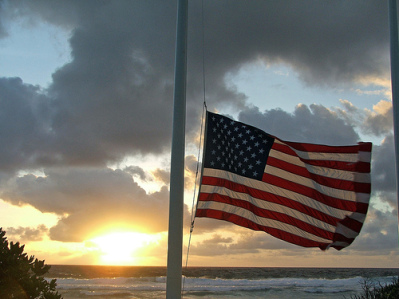
I always knew it was summertime when my old man took our American flag out of the closet and displayed it outside our house. Other dads in the neighborhood would do the
same. All down my neighborhood street, flags of red, white, and blue flapped in the humid Oklahoma air.
With summer right around the corner and all the patriotic holidays that come along with it, here’s a brief rundown on the United States Flag Code so you’ll know how to fly Old Glory with respect.
History of the Flag Code
The Flag Code was passed on June 14, 1923. Before that date, there was no federal regulation on how to display the United States flag. Both the American Legion and the VFW worked to promote flag etiquette before the passage of the Flag Code.
The Flag Code is found in several sections of the U.S. Code. 4 U.S.C. 1 pertains to the flag. 36 U.S.C. 3 covers patriotic customs and observances. The code is merely a guideline. It does not impose penalties for misuse of the American flag or for not following the guidelines.
There previously was a section in the Flag Code that contained criminal penalties for certain acts of desecration to the flag. That section was struck down as unconstitutional in the Supreme Court case Texas v. Johnson. Congress then amended the section with the Flag Protection Act of 1989. The statute imposed a fine and/or one year of prison for knowingly mutilating or physically defiling an American flag. This statute was also struck down as unconstitutional by the Supreme Court decision, this time in U.S. v. Eichman. You can read the case here. Many will be surprised that Justice Anton Scalia, an extremely conservative Supreme Court Justice, sided with majority opinion on the unconstitutionality of the statute.
Anatomy of the United States Flag
The U.S. Flag consists of a blue rectangle in the canton bearing 50 white stars representing each state. This is called the Union. The Union is offset by 13 alternating red and white stripes representing the 13 original colonies.
There isn’t a legally defined symbolism of the flag and its colors. It is said that George Washington said the following about the symbolisim of the flag:
We take the stars from Heaven, the red from our mother country, separating it by white stripes, thus showing that we have separated from her, and the white stripes shall go down to posterity representing Liberty.
When to Fly the Flag
Which Days. The flag should be displayed on all days. However, the Flag Code sets out days that it is particularly appropriate to display the flag:
- New Year’s Day, January 1
- Inauguration Day, January 20
- Martin Luther King Jr.’s birthday, third Monday in January
- Lincoln’s Birthday, February 12
- Washington’s Birthday, third Monday in February
- Easter Sunday (variable)
- Mother’s Day, second Sunday in May
- Armed Forces Day, third Saturday in May
- Memorial Day (half-staff until noon), the last Monday in May
- Flag Day, June 14
- Independence Day, July 4
- Labor Day, first Monday in September
- Constitution Day, September 17
- Columbus Day, second Monday in October
- Navy Day, October 27
- Veterans Day, November 11
- Thanksgiving Day, fourth Thursday in November
- Christmas Day, December 25
- and such other days as may be proclaimed by the President of the United States
- the birthdays of states (date of admission)
- and on state holidays.
Time of day. According to the Code, it’s “custom to display the flag outside only from sunrise to sunset. However, when a patriotic effect is desired, the flag may be displayed twenty-four hours a day if properly illuminated during the hours of darkness.”

Photo by WilliamHartz
How to properly display the flag
§ 7 of the Flag Code governs the position and manner of display of the United State flag.
Displaying the flag from a staff on a building. This is how most American’s display the flag from their homes. When you display the flag from a staff projecting horizontally or at an angle from a window sill, balcony, or front of building, the union of the flag should be placed at the peak of the staff unless the flag is at half staff. 4 U.S.C 7(h).
Displaying the flag over the middle of the street. During patriotic holidays, many communities hang a flag over the middle of the street. If this is done, the flag should be suspended vertically with the union facing north on an east to west street or the east in a north and south street. 4 U.S.C 7(j).
Displaying the flag at half staff. The United States flag is flown at half staff to pay respect to fallen public figures or soldiers. When the flag is flown at half staff, it should be first hoisted to the peak of the staff for an instant and then lowered to the half-staff position. The flag should be again raised to the peak before it is lowered for the day.
On Memorial Day the flag should be displayed at half-staff until noon only, then raised to the top of the staff. The President or Governor of a state can order the flag to be flown at half staff in the event of the death of public officials, foreign dignitaries, or soldiers.
The flag shall be flown at half-staff 30 days from the death of the President or former President; 10 days from the death of the Vice President the Chief Justice or a retired Chief Justice of the United States, or the Speaker of the House of Representatives; from the day of death until interment of an Associate Justice of the Supreme Court, a Secretary of an executive or military department, a former Vice President, or the Governor of a State, territory, or possession; and on the day of death and the following day for a Member of Congress. 4 U.S.C. 7(m).
Displaying a flag without a staff. If you decide to display the flag without a staff, the flag should be displayed flat, whether indoors or out. When displayed either horizontally or vertically from the wall, the union should be uppermost and to the flag’s own right, that is, to the observer’s left. When displayed in a window it should be displayed in the same way. 4 U.S.C 7(i).
Flag Etiquette
Conduct during hoisting, lowering or passing of flag. One of my fondest memories is going to the annual Fourth of July parade in my hometown and watching people stand up from their lawn chairs with their right hand over their heart as the flag passed. It always gave me chills and still does.
During a ceremony of hoisting or lowering the flag or when the flag is passing in a parade or in review, all persons present except those in uniform should face the flag and stand at attention with right hand over the heart. Those present in uniform should render the military salute. When not in uniform, men should remove their headdress with their right hand and hold it at the left shoulder, the hand being over the heart. Aliens should stand at attention. The salute to the flag in a moving column should be rendered at the moment the flag passes. 4 U.S.C. 9.
Retiring a flag. Contrary to popular belief, you do not have to retire a United States flag if it has touched the ground. Just correct the situation immediately and if the flag has been dirtied, clean it by hand.
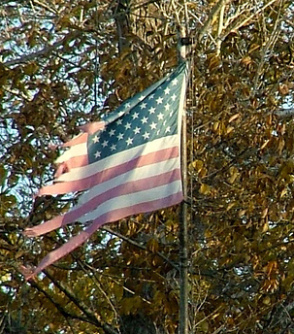
Photo by GoodSheila
A flag need only be retired if it “is in such a condition that is no longer a fitting emblem for display. ” 4 U.S.C. 8(k). Basically this means if your flag is old and tattered, it’s time to get a new one. When a flag is retired, “it should be destroyed in a dignified way, preferably by burning.” Id.
You can always take your old flag to your local VFW for help on disposing the flag appropriately.
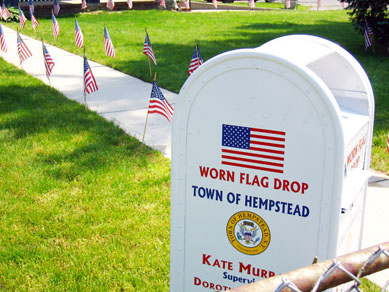
Photo by PersonalSpaceInvader
How to Fold the Flag

Photo by airborne4christ
Learning how to fold the American flag was one of the first things I learned as a Cub Scout. It’s one of those things that left a lasting impression in my mind. You would always see a military honor guard fold the flag with such precision and grace. I felt pretty awesome folding the flag with the same respect they did.
1. Fold the flag in half width-wise twice.
2. Fold up a triangle, starting at the all-striped end and repeat until only the end of the union is exposed.
3. Fold the remaining square into the triangle and tuck inside the folds. A triangle of just the blue field of stars should be visible.
Flag Trivia
- You’re not supposed to wear the flag. 4 U.S.C. 8(d).
- Displaying those big ol’ flags horizontally at a football game violates the Flag Code. 4 U.S.C. 8(c)
- You’re not supposed to use the American flag in advertisements. 4 U.S.C. 8(i). I wish more companies would follow this one. I hate when people use patriotism to sell me their crap.
- United States flag napkins are in violation of the code. 4 U.S.C. 8(i).
- Stamps with the American flag on it could possibly be violating the Flag Code. “The flag should not be printed or otherwise impressed on … anything that is designed for temporary use and discard.” 4 U.S.C. 8(i).
- Why does the military wear a flag patch backwards on their arm? The field of stars is to be worn closest to your heart. Moreover, the flag should look like it’s advancing, not retreating. So, if a patch is worn on your right sleeve, you should apply it backwards.
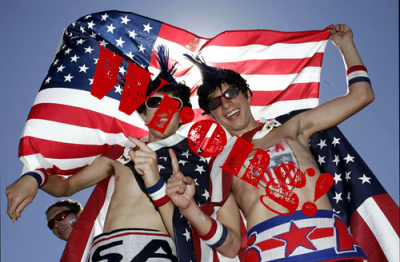
Photo by azakeri
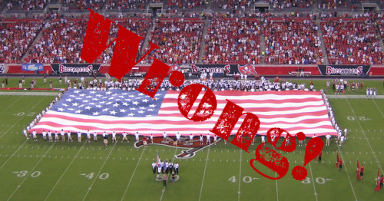
Photo by a brother monk
Here’s one thing that should be added to the flag code: Only buy Made in America flags. Several times I’ve been looking at an American flag, usually the chintzy plastic variety, which shouldn’t even exist, and have seen a tag saying “Made in China.” It’s enough to make Betsy Ross roll over in her grave. Americans spend over 5.3 million dollars on imported flags each year, most of them made in China. Perhaps even more disconcerting is that during 2001, in the wave of patriotism that washed over America after 9/11, American bought $52 million dollars in imported flags. The flag should symbolize the blood, sweat, and tears of American men and women who brought this country into existence, not our indebtedness to China and the death of the American manufacturing sector. So have a little pride, cough of a few more bucks, and buy an American flag made by Americans in the U S of A.



